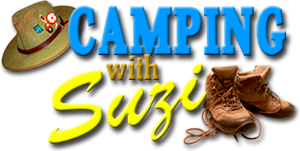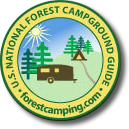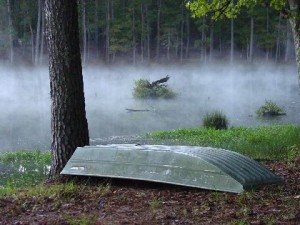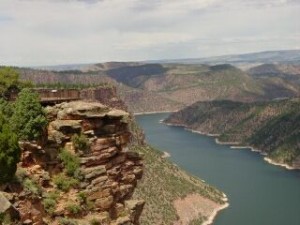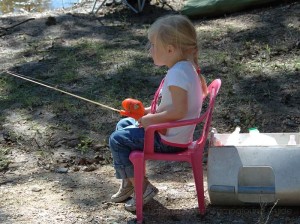A Few Fishing Spots in some National Forests
There seems to be two types of anglers: those who know the best fishing spots and those looking for the perfect spot. After talking with Forest Service folks who know about fishing spots in the National Forests, our conclusion is the very best spots are 12 miles up a trail. However, the Forest Service folks we spoke with did give us some suggested locations that aren’t such a challenge to reach. Here are some their suggestions:
NORTHERN REGION (Idaho, Montana & Wyoming): One of the Forest Service’s responsibilities is to insure watershed quality. How well they are doing can be seen in the quality of fishing. This Region must be doing an outstanding job since it may have the best Brook trout fishing opportunities in the country. Just about any small stream (possibly no more than 10 feet wide), flowing clear and cold, has Brook trout just waiting to be caught. According to Brian Riggers, acting Fisheries Program Leader for the Northern Region, the tributaries of the Lolo Creek in the Lolo National Forest (NF) and the Burnt Fork of Bitterroot River in the Bitterroot NF offer “good” Brook trout fishing opportunities. But he identifies Georgetown Lake in the Deerlodge National Forest (across from the Lodgepole campground) as having the “best” Brook trout, explaining: “Georgetown Lake is large and shallow and the Brook trout are good size.” It should be mentioned the native Cutthroat trout aren’t doing as well as the non-native Brook trout, which can be found in the same water. Since Brook trout are plentiful and good eating, Mr Riggers requests anglers take the Brooks and return the Cutthroats to the water.
SOUTHERN REGION (from Virginia across to Missouri and down to Texas): Unlike the northern area of the country, the south never experienced a species-killing period of glaciers so you have an amazing variety of fish to challenge you. Fish in the south can be caught using a fancy custom-made pole, a simple line with a hook, or even your fingers (a.k.a. noodling) from a bank, boat, or canoe on a pond, lake, stream, river, and ocean. With such a variety of fish, methods, and locations, Leigh Ann McDougle, Fisheries Program Manager for the Southern Region, reminds us there are many great fishing spots to discover all over the Region. She suggests starting your discovery with Red Hills Lake next to Red Hill Lake campground in the Sabine NF, where bass weight 13 pounds. But, there are numerous other outstanding fishing opportunities in Texas. Click here for more about fishing opportunities in the Sabine, Angelina, Davy Crockett, and Sam Houston National Forests. St Mary’s River in George Washington NF, Virginia, is a great place to hike and fish for native Brook trout and, in Carolina’s national forests, fish range from Walleye and Crappie in the Nantahala National Forest to the Croatan National Forest with its “finest” Blackwater bass fishing.
There is more to this Region than the magnificent Red Rock Canyon area, desert lands, and outstanding ski mountains, namely, the fabulous fishing opportunities found here. Daniel Duffield, the Intermountain Region’s Fisheries Program Manager, shared a few outstanding fishing spots with a qualifier – check with the Ranger District office in the area for current conditions, what’s biting and where (a good idea no matter the Region). Popular fishing spots in the Region are Flaming Gorge Reservoir (Mustang Ridge campground, Ashley NF), WY; Henry’s Fork River of Snake River (Box Canyon campground, Targhee NF), ID; and Strawberry Bay Reservoir, UT (Strawberry Bay campground, Uinta NF). Each offers great opportunities for any angler, but Mr. Duffield feels the very best fishing spots for Greyling and Cutthroat trout are in the Uinta Wilderness and the Dixie NF’s Boulder Mountain area.
Remember, the Forest Service is responsible for insuring a quality environment for fish, but for license and regulation information go to the State’s Fish and Wildlife website. For more information about the fishing opportunities in our national forests go to the Forest Service fishing page and click through to the forest you’ll be visiting. It should be noted not all forests are listed but this doesn’t mean there is no fishing opportunities in the unlisted forests. Give them a call to see what fish are available and where.
A fishing derby is a great way to introduce children to the joys of fishing. Just about every national forest seems to hold at least one of these events per year. The Intermountain and Eastern regions seem to hold fishing derby events in early June while the Southern Region holds them all summer long. Check with the local Ranger District Office for a fishing derby schedule. Also visit the Future Fisherman Foundation’s Take Me Fishing for tips on fishing with kids, how to fish safely, and what to do in case of an accident or emergency.
National forests are great places to learn about fishing and even an better place to enjoy the challenges and successes experienced by anglers. Think of the suggestions provided in this article as only a beginning to discovering your perfect fishing spot. Drop a line and get hooked on fishing in our national forests. Soon you might move from those looking for a perfect fishing spot to one who has discovered the best fishing spot.
